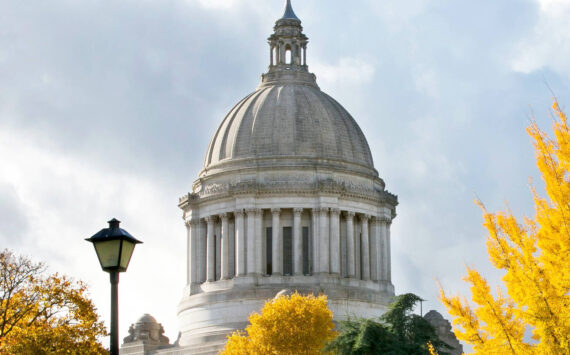The American Planning Association (APA) today announced the designation of Point Defiance Park as one of 10 Great Public Spaces for 2011 under the organization’s Great Places in America program. APA singled out Point Defiance Park for its natural forest, saltwater beaches, spectacular views, and rare attractions, each of which offers numerous possibilities for recreation, education and communing with nature.
“Since its early days more than 100 years ago, Point Defiance Park has been a gathering place for Tacoma residents and a destination enjoyed by millions of visitors to our community,” said Tacoma Mayor Marilyn Strickland. “We are very proud that Tacoma is recognized as home to one of America’s greatest urban parks.”
Through Great Places in America, APA recognizes unique and exemplary streets, neighborhoods, and public spaces three essential components of all communities. These authentic places have been shaped by forward thinking planning that showcases diverse architectural styles, promotes community involvement and accessibility, and fosters economic opportunity. Since APA began Great Places in America in 2007, 50 neighborhoods, 50 streets and 40 public spaces have been designated in all 50 states and the District of Columbia.
“Without the community’s unwavering support, evidenced for the past 123 years, this urban forest might never have been preserved for public use,” said APA Chief Executive Officer Paul Farmer, FAICP. “This commitment to stewardship has allowed the park’s legacy of beauty and natural history to pass from generation to generation. This urban oasis, a refuge for both city dwellers and wildlife, is a cherished gathering place, a site for celebrations both customary and momentous,” he added.
Bordered on three sides by the tidal waters of Puget Sound, Point Defiance was carved by glaciers over tens of thousands of years. The park, which offers exceptional sound and mountain views, remains heavily wooded.
Originally set aside for its strategic vantage point as a possible federal military reservation, Point Defiance Park resulted from lobbying efforts by the city’s most prominent residents to have the land repurposed as a park. President Grover Cleveland signed legislation in 1888 permitting development of a park but it wasn’t until 1905 that the title was transferred to the city.
By earmarking land for parks, Tacoma was at the forefront of a planning philosophy espoused by Frederick Law Olmsted. Point Defiance was its most impressive acreage. The park’s eventual design would include natural landscapes and public spaces that could be accessed and enjoyed by all. To that end, one of the first matters of business in 1888 was to extend a streetcar line to the park. The park quickly became such a popular destination that a second streetcar line was added and a permanent brick station was built in 1914. The streetcar station reflects the design of a Japanese Lodge but soon became simply known as the Pagoda. The Pagoda fell victim to an arsonist’s fire in 2011 and is now being restored to its original grandeur. Once complete, it will return to its function as a popular venue for weddings, receptions and other gatherings.
Two years after securing title to the park, the city created a separate taxing district, the Metropolitan Park District of Tacoma, to pay for its maintenance and development of all city parks. In1903, a public/private venture led to the creation of the park’s first boathouse. The advent of the automobile led to creation of the Five Mile Drive around the forest’s perimeter. By 1910, the zoo’s collection of animals included elk, bison, bears, monkeys and lions.
The park’s first plan was created in 1911 by the Kansas City-based landscape architectural firm Hare & Hare. Among its legacies was the creation of four distinct regions within the park the forest, the garden, the waterfront, and the zoo/aquarium. It also raised the idea that vast swaths of the park should remain undeveloped.
“Stewardship of the park’s magnificent natural and historic assets is foundational to both our planning and operation of this community treasure,” said Metro Park’s Tacoma Board President Larry Dahl.
The 1995 Forest Management Plan and 2010 Forest Stewardship Plan focus on sustainable practices in the care of park’s old-growth trees, garnering Forest Stewardship Council certification for the park. A citywide Park Bond issue, approved in 2005, earmarked $5.5 million for infrastructure improvements and update of the park’s master plan. The concept plan, completed and adopted by the Board of Park Commissioners in 2008, divides Point Defiance into three Planning Areas Waterfront, Forest and Attractions.
Among the attractions found today in this 702-acre park are Owen Beach, which features kayaking, swimming and picnicking; Point Defiance Marina, with its free public fishing piers; eight gardens, showcasing species such as roses, iris or fuchsia and those indigenous to the Northwest, as well as a distinctive Japanese Garden; the Northwest’s only combined zoo and aquarium, the AZA accredited Point Defiance Zoo & Aquarium; and Fort Nisqually Living History Museum, home to a national historic landmark where re-enactors in period clothing magically turn back the hands of time to recreate life in the 19th century. The park also is home to several distinctive works of art including the Cushman Statue, The Family, Torii Gate & Shinto Shrine, and Promenade Poems.
For more information about these public spaces, as well as lists of the 2011 APA 10 Great Neighborhoods and 10 Great Streets, and designations between 2007 and 20010, visit http://www.planning.org/greatplaces . This year’s Great Places in America will be celebrated as part of APA’s National Community Planning Month in October 2011. For more about the special month, visit http://www.planning.org/ncpm .




